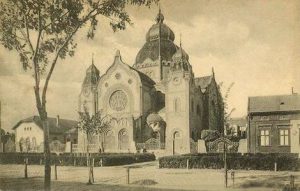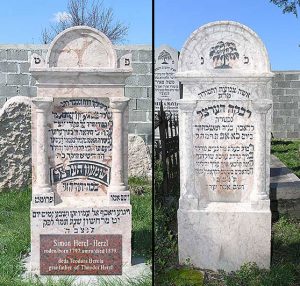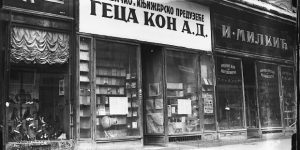Did you know that…
10. …according to many the 2nd largest synagogue in Europe and one of the only synagogues designed in the Hungarian Art Nouveau style left in existence is the Subotica synagogue.
Located in northern part of Serbia, this synagogue was completed in 1902and constructed when Serbia was still part of Austria-Hungary, hence this uncanny cultural influence in the synagogue’s aesthetic. The Subotica Synagogue served the Serbian Neolog community and today it is considered a Monument of Exceptional Importance, and it is protected by the national government. For many years the synagogue was neglected and just in 2018. was fully renovated.
https://www.wmf.org/history-architecture-subotica-synagogue
9. …Shira U’tfila is the only band in this region and probably in the whole Europe that nurtures the culture of Sephardic music. The band brings together a multi-ethnic, multi-faith ensemble that draws its inspiration from the diversity and richness of Judeo-Spanish, Ottoman-Turkish, Arabic and Balkan musical traditions.
Our favourite song
You can also follow them on Facebook
8. …there is such a thing as Belgrade Purim?
The first Jewish community building in Belgrade was erected in 1860 in Dorćol, in Solunska Street- It was the famous Old Home or mildar. Mildar was also the school building where, during the Turkish bombardments in 1862, a miracle happened and the whole community found the shelter and miraculously survived the bombing of the city. There were shots and whistles on all sides. An artillery shell hit the building, but became lodged in the roof and failed to explode. This event is well-known as Belgrade Purim.
7. …the hotel where the conference will take place was owned and built by the Jewish engineer Leon Talvi in 1923, was the most beautiful and most modern hotel in the whole country and without competition even in the Balkans.
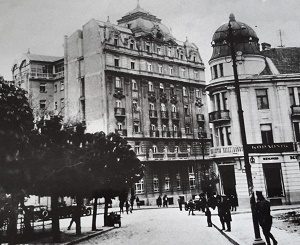 Constructed in reinforced concrete, with two basements, ground floor and six floors, it had its own power plant, cooling installation and ice-cream production, laundry, pumps for hot water, central heating, large kitchen, three lifts, post office and car or bus transfer. Silver cutlery, gallery of paintings and sculptures in five lounges on the fifth floor, worth 2.5 million dinars, with Italian, French, Russian and local artists paintings, open roof restaurant, café, restaurant, dancing theater and banquette halls made it even more special. According to Politika newspaper, the first Yugoslav Zionist congress took place in the theater hall of this hotel on June 16th and 17th 1924. (source: https://ester.rs/walk-jewish-inter-war-belgrade/ )
Constructed in reinforced concrete, with two basements, ground floor and six floors, it had its own power plant, cooling installation and ice-cream production, laundry, pumps for hot water, central heating, large kitchen, three lifts, post office and car or bus transfer. Silver cutlery, gallery of paintings and sculptures in five lounges on the fifth floor, worth 2.5 million dinars, with Italian, French, Russian and local artists paintings, open roof restaurant, café, restaurant, dancing theater and banquette halls made it even more special. According to Politika newspaper, the first Yugoslav Zionist congress took place in the theater hall of this hotel on June 16th and 17th 1924. (source: https://ester.rs/walk-jewish-inter-war-belgrade/ )
6. …a very early and strong advocate of Jewish return to Zion was Rabbi Judah Alkalai who lived in part of the Belgrade called Zemun.
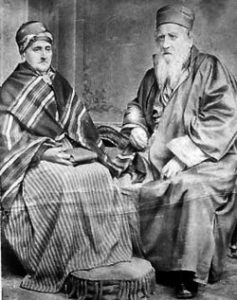 Judah ben Solomon Hai Alkalai, (born 1798, Sarajevo, Bosnia, Ottoman Empire [now Bosnia and Herzegovina]—died 1878, Jerusalem, Palestine) was a Sephardic rabbi .Alkalai was taken to Jerusalem at an early age, and there he was reared and educated for the rabbinate. At 25 he went to Semlin(Zemuna), than Croatia, as a rabbi and found himself teaching Hebrew to the young men of his congregation, whose native language was Ladino. He wrote two books in that language, in the first of which he argued that a physical “return to Israel” (i.e., to EretzYisraʾel, the Holy Land in Palestine) was a precondition for redemption (salvation), instead of the symbolic “return to Israel” by means of repentance and resuming the ways of God. This doctrine was unacceptable to Orthodox Jews and generated much controversy. His second book was a refutation of the heated attacks directed at his proto-Zionist views.
Judah ben Solomon Hai Alkalai, (born 1798, Sarajevo, Bosnia, Ottoman Empire [now Bosnia and Herzegovina]—died 1878, Jerusalem, Palestine) was a Sephardic rabbi .Alkalai was taken to Jerusalem at an early age, and there he was reared and educated for the rabbinate. At 25 he went to Semlin(Zemuna), than Croatia, as a rabbi and found himself teaching Hebrew to the young men of his congregation, whose native language was Ladino. He wrote two books in that language, in the first of which he argued that a physical “return to Israel” (i.e., to EretzYisraʾel, the Holy Land in Palestine) was a precondition for redemption (salvation), instead of the symbolic “return to Israel” by means of repentance and resuming the ways of God. This doctrine was unacceptable to Orthodox Jews and generated much controversy. His second book was a refutation of the heated attacks directed at his proto-Zionist views.
Here you can read more about Jewish history of Zemun and about Rabbi Judah Alkalai:
https://thenutshelltimes.com/2018/08/27/hidden-belgrade-34-rabbi-alkalai-zemun-and-zionism/
https://www.britannica.com/biography/Judah-ben-Solomon-Hai-Alkalai
5. …the grandparents of Theodor Herzl are buried on the Jewish cemetery in Zemun
Theodor Herzl’s paternal grandfather, Simon Loeb Herzl, reportedly attended Alkalai’s synagogue in Semlin and the two frequently visited. Grandfather Simon Loeb Herzl “had his hands on” one of the first copies of Alkalai’s 1857 work prescribing the “return of the Jews to the Holy Land and renewed glory of Jerusalem.” Contemporary scholars conclude that Herzl’s own implementation of modern Zionism was undoubtedly influenced by that relationship.
In 2018 a street in Zemun was named after Theodor Herzl.
4. …that there are still few community members that are very passionate to pass on the “secret” receipts of Sephardic cousin, one of them is Hanika Gashic and she prepares amazing Sephardic dishes.
If you would like to hear a little about her life you can watch the movie made by Centropa organization.
And also you can have a look at the recipe for burmuelos traditionally made for Chanukah
3. …Geca (Geza Kon) established a bookselling and publishing business in Belgrade which soon became the largest in Yugoslavia.
From his premises in Belgrade he published over 3,500 books before his business was closed in 1941 with the Axis Invasion of Yugoslavia. Kon was born in Csongrád (Hungary). His father was a rabbi and was the director of an elementary school. Unable to complete school, Kon moved to Belgrade in 1889. In Belgrade, he found work in the bookshop owned by Frederick Breslauer. From there he continued his own carrier.
Today this bookstore still carries the name of Geca Kon and is located in the main street in Belgrade.
2. …the first Women’s club in Serbia was the Jewish Women’s Society
Jewish women’s clubs began to spring up in Sephardi and Ashkenazi communities in Serbia, Bosnia, Croatia, and the Vojvodina in the late nineteenth century, around the same time that Jewish and Christian women were creating 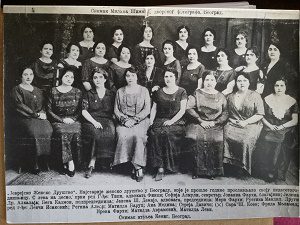 similar organizations elsewhere in Europe. Although Jewish women were not treated as equal members of the Jewish community and were excluded from voting and participating in communal governance, women’s philanthropic organizations came to play an important role within Jewish communal life because they not only helped large numbers of needy Jews, especially women, children and the elderly, but also enhanced the communal spirit of solidarity and cooperation by holding numerous social activities and entertainments to benefit charitable causes and promote both Jewish and secular culture.In 1874 a handful of Sephardi women formed the first women’s club in Serbia, the Jewish Women’s Society.
similar organizations elsewhere in Europe. Although Jewish women were not treated as equal members of the Jewish community and were excluded from voting and participating in communal governance, women’s philanthropic organizations came to play an important role within Jewish communal life because they not only helped large numbers of needy Jews, especially women, children and the elderly, but also enhanced the communal spirit of solidarity and cooperation by holding numerous social activities and entertainments to benefit charitable causes and promote both Jewish and secular culture.In 1874 a handful of Sephardi women formed the first women’s club in Serbia, the Jewish Women’s Society.
1. …through all the years of 1990s wars in Yugoslavia Jews and Jewish communities were helped by many communities and organizations around the world.
The contacts, friendships and “am echad lev echad” spirit followed all members during those difficult years and immediately after the war up to today, communities of Ex-Yugoslavia continued to create programs and events where members will meet and celebrate their Jewishness.

